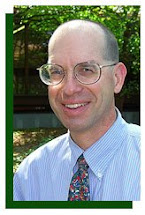
Frederick Mosteller, who applied statistics to help everyday people understand many subjects, said "It is easy to lie with statistics, but it is easier to lie without them."
Statistics from surveys are often used to provide accountability for conservation decisions related to fish, forest, and wildlife management. Opinions, interests, participation in activities, and satisfaction with performance are some of the human dimensions of conservation efforts. These human dimensions help the staff of the Missouri Department of Conservation make informed and accountable decisions.
Surveys provide a cost-effective way to learn about the conservation opinions of Missourians by asking a relatively small number of individuals to provide their opinions. For most questions, valid results can be obtained by asking about 800-1000 individuals to offer their opinions from the entire 5.8 million individuals that live in Missouri. When conducted correctly, a survey can provide results that are representative of the entire population. If we are willing to accept a slight decrease in the ability to separate overall responses for individual questions, a valid survey in Missouri could be conducted with 300-400 individuals.
Think of looking at the shoes that people wear. If you look at enough people, in enough places, you'll soon see most of the kinds of shoes that people wear, without having to look at everyone, in every place. Using the information you observe, you can soon predict the kinds of shoes people are wearing in other places.
An introduction to using surveys to collect public opinions is available at: http://www.whatisasurvey.info/
An article in the Missouri Conservationist that describes how surveys are used for conservation and fish, forest, and wildlife management is available at: http://www.mdc.mo.gov/conmag/2007/01/20.htm and a previous article is available at: http://www.mdc.mo.gov/conmag/2000/02/40.htm
Frederick Mosteller, who died in 2006, has biographical information at the American Statistical Association, available at: http://www.amstat.org/about/statisticians/index.cfm?fuseaction=biosinfo&BioID=10
If you want to become a statistician and pursue a career using statistics, an excellent source of information about what a statistician does and how to become one is available at: http://www.amstat.org/careers/index.cfm?fuseaction=main
Statistics from surveys are often used to provide accountability for conservation decisions related to fish, forest, and wildlife management. Opinions, interests, participation in activities, and satisfaction with performance are some of the human dimensions of conservation efforts. These human dimensions help the staff of the Missouri Department of Conservation make informed and accountable decisions.
Surveys provide a cost-effective way to learn about the conservation opinions of Missourians by asking a relatively small number of individuals to provide their opinions. For most questions, valid results can be obtained by asking about 800-1000 individuals to offer their opinions from the entire 5.8 million individuals that live in Missouri. When conducted correctly, a survey can provide results that are representative of the entire population. If we are willing to accept a slight decrease in the ability to separate overall responses for individual questions, a valid survey in Missouri could be conducted with 300-400 individuals.
Think of looking at the shoes that people wear. If you look at enough people, in enough places, you'll soon see most of the kinds of shoes that people wear, without having to look at everyone, in every place. Using the information you observe, you can soon predict the kinds of shoes people are wearing in other places.
An introduction to using surveys to collect public opinions is available at: http://www.whatisasurvey.info/
An article in the Missouri Conservationist that describes how surveys are used for conservation and fish, forest, and wildlife management is available at: http://www.mdc.mo.gov/conmag/2007/01/20.htm and a previous article is available at: http://www.mdc.mo.gov/conmag/2000/02/40.htm
Frederick Mosteller, who died in 2006, has biographical information at the American Statistical Association, available at: http://www.amstat.org/about/statisticians/index.cfm?fuseaction=biosinfo&BioID=10
If you want to become a statistician and pursue a career using statistics, an excellent source of information about what a statistician does and how to become one is available at: http://www.amstat.org/careers/index.cfm?fuseaction=main


2 comments:
Mr Thorne, consumers are bombarded with surveys fairly often and we've even heard that survey results can be directed towards specific outcomes, by the types of questions asked. In essence, Survey writers can get the respondent to answer in a preferred way (their desired outcome) by wording the question in a certain way....How does MDC differ in this regard or perhpas how does MDC keep the bias out of its surveys?
We do try to reduce a variety of errors that might bias survey results. To avoid errors and bias:
we review questions and discuss the usefulness of the questions to decision-making;
we use outside survey firms, like The Gallup Organization, and others, to provide outside expertise and experience to draft fair questions;
we conduct pretests with both internal and external participants to evaluate how well the questions are working and if the question is clearly understood;
we try different variations of the same question, sometimes in the same survey, to compare results.
Post a Comment